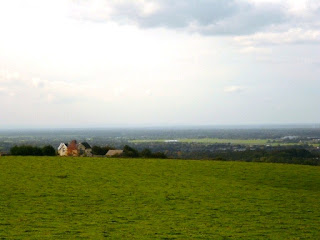We are moving once again, the days have been beautiful, sunny and hot, a real bonus for the last week in September. This week also marks 6 months of our 'gap' 18 months. It's gone so quickly, and are we still enjoying it? You bet! Do we want to go back? not yet!
Yesterday we passed the two mills at Bollington, not used as flats, offices and small business units.
Clarence Mill
and Adelphi Mill
Today we worked down the Bosley flight of locks, the only locks on the Macclesfield Canal. They are well kept and in good working order, so it took just a couple of hours to get through the 12 locks.
Can you believe the blue sky!
The top lock, No.1, with good service building. There is a little arm the other side to pull alongside and access the services. As well as the usual water, pump-out, elsan point, there are toilets, shower, washing machine and drier.
nice curved steps to the lock
looking down, a bit hazy as we were going towards the sun.
looking back at the start of the autumn colours.
The stone bridges on the Macclesfield are distinctive, with lovely curved parapets and curved right down the the ground. But on the way into Congleton there is a change...
Bridge 74, with 75 and 76 beyond.
A higher than usual road bridge, made of stone but with tall straight sides.
No. 75 is actually 3 bridges, a higher level road bridge, the original road bridge and railway bridge.
and no.76, looking back the other way to get the winding approach, known on this canal as a snake bridge. Sometimes known as a turnover bridge,this arrangement takes the towpath from one side of the canal to the other, allowing the horse to travel across without the rope having to be untied and rehitched.
We took a walk down into Congleton itself, finding a typical Cheshire black and white building,
and street of shops.
there's a good range of independent shops in the high street, the sweet shop
and the florist being my favourite.
The impressive town hall.
One of the many bears to be found around the Congleton, also known as Beartown.
Congleton history records that cockfighting and bearbaiting were popular sports. On one occasion the town bear died suddenly just before the annual holiday when the bear baiting would take place. The town had been saving to buy a new bible, but lent 16 shillings from the fund to buy a new bear. Hence the (inaccurate) rhyme;
Congleton, rare, Congleton rare,
Sold the Bible to buy a bear.
This market town was built around the textile industry, starting with a silk mill, then ribbon weaving, and then also cotton spinning.
Been foraging again, lovely crab apples that will make tasty jelly.
20 miles, 12 locks, 2 bridges (2 days)


























































